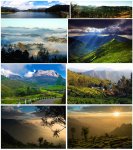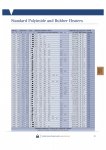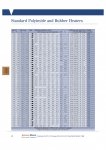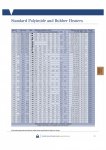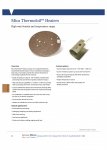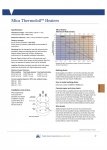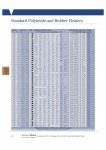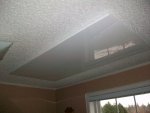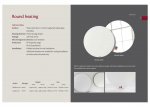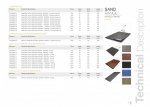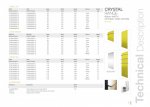biotect
Designer
.
CONTINUED FROM PREVIOUS POST
****************************************
Once again, the AWG won't work because of the cool temperatures. And second, because winter is the dry season in the more northerly parts of Australia, rooftop rainwater collection won't work either.
This will be especially true for the desert and semi-arid parts of the interior of Australia, which receive very little rainfall during the winter months, and also have average winter temperatures cooler than the coast, because they are distant from the moderating effect of the ocean – see http://www.australia.gov.au/about-australia/australian-story/austn-weather-and-the-seasons:


Note that the maximum temperature at Alice Springs in the middle of the winter is 21 degrees Celsius, but minimums of 5 – 9 degrees Celsius are possible. Also see the weather data for Alice Springs in the Wikipedia article at https://en.wikipedia.org/wiki/Alice_Springs , and see https://weather-and-climate.com/ave...-Temperature-Sunshine,Alice-Springs,Australia . So even in Alice Springs during the winter, an AWG would not work much of the time, if only because of the low temperature. And yet Alice Springs is reasonably far north, located at a latitude near the middle of the continent
Even more importantly, an AWG won't work in Alice Springs because the humidity will be too low:

Yes, I know that this weather graph for Alice Springs is very information-dense. See http://www.australia.climatemps.com and http://www.alice-springs.climatemps.com for the website. But the month-by-month weather graphs on this particular website are extremely detailed and comprehensive. And hence, extremely useful for my purposes. They are by far the very best such weather graphs that I have been able to find on the web, at least so far. in the discussion over the next few pages I will make liberal use of them, so the committed reader might want to become familiar with them.....:ylsmoke:..
The pay-off is this: once one begins examining climate at this level of detail, one's picture of the amount and seasonality of rainfall and humidity one might expect in a given location, changes ever so slightly again, as we shall see below. Sure, larger maps of yearly rainfall, climate, or relative humidity for entire continents -- of the kind that I just used in the previous two posts -- help one make very general, broad-brushstorkes observations. But they are extremely general, and might lead one to false conclusions at the more fine-grained level of local climate. Yes, the graph of weather data for Flagstaff seems tailor-made for a data-junkie like me.....:sombrero:...But such detailed weather graphs will help me illustrate some important points in a very powerful, compressed way.
For instance, although there is scant rainfall in Alice Springs during the winter, relative humidity does in fact rise. This is an interesting phenomenon that we will see repeated again and again. An increase in rainfall does not necessarily correspond with an increase in relative humidity. In the case of Alice Springs, humidity and rainfall are inversely correlated: when one goes up, the other goes down. This will also be true in some other desert locations, but not all; and it will not necessarily be true in non-desert locations. So just this one graph alone serves to illustrate a crucial point that I will be developing: that North American and European climate intuitions tend to be misleading, and actual empirical climate data holds many surprises. It is simply wrong to assume that as rainfall goes up, humidity rises as well. Or that when and where there is no rainfall, there is not humidity. Making this assumption is a very big mistake, and we'll see just how much of a mistake further along, when I discuss "Coastal Fog Deserts".
Now in the case of Alice Springs, although relative humidity rises in the winter, it doesn't rise enough: it still does not manage to break through the 35 % threshold for AWG operability. And because Alice Springs locates in the center of Australia and distant from the coasts, the average monthly winter temperature from May to August is just at or slightly below the AWG threshold of 15.5 degrees. So either way -- humidity or temperature -- an AWG will not work for those 4 months in winter. Notice also how even in the spring, summer, and autumn months an AWG still will not work in Alice Springs. But in these other seasons because relative humidity in Alice Springs will drop even further, down to the 20 % range. There is some rain in Alice Springs in the summer months, so perhaps the TerraLiner could collect that on the roof......
The picture is much the same in other towns located deep in the heart of the Australian outback. For instance, at Wiluna, located near the center of Western Australia, the temperature is also too cold in the winter for an AWG to operate, for the four months from May to August -- see https://en.wikipedia.org/wiki/Wiluna,_Western_Australia and https://www.google.co.uk/maps/place...s0x2bbc1fada79324f7:0x400f6382479d310!5m1!1e4 . Relative humidity in Wiluna is a bit more promising, but even still, it barely scratches above 35 % in December and January, when it reaches just 39 % -- see http://www.wiluna.climatemps.com . So during the two months in Wiluna when humidity is high enough for an AWG to work (marginally), it will not work because of temperature. And in the months when the temperature would be adequate, the relative humidity will not be: relative humidity at Wiluna plunges to 19 % in the middle of Australia's summer.
At Kalgoorie further south, but still near the desert, relative humidity is much better, always above 40 %, and reaching 60 % in the winter months -- see https://en.wikipedia.org/wiki/Kalgoorlie and https://www.google.co.uk/maps/place...s0x2a4d4fc68b12a54f:0x400f6382479d4f0!5m1!1e4 . But down at this latitude temperature would be an even bigger problem. Although maximum temperatures of 17.5 and 16.6 degrees Celsius are possible in the winter at Kalgoorie, minimums of 4.6 and 6.1 degrees Celsius are also possible in June and July. And throughout the winter at Kalgoorie the average temperature remains below the 15.5 degree Celsius operability threshold for 5 months, from May to September -- see http://www.kalgoorlie.climatemps.com .
Now Kalgoorie doesn't seem to get much of a rainfall spike in the summer months, and the level of rainfall in Kalgoorie seems to remain fairly constant throughout the year. Kalgoorie locates in the "intermediate zone" between Australia's "rainy-summers" and "rainy-winters" climates; an intermediate zone that I illustrated as a band shaded bright purple, in the second-to-last map found in the previous post. Kalgoorie's level of rainfall, although more constant, is not a terrific, with a maximum of just 35 mm in June. But Kalgoorie's rainfall never drops below 10 mm either. In short, at least Kalgoorie's maximum rainfall occurs in June/July, at the height of the winter, when the Australian outback further north is the driest. At least peak rainfall in Kalgoorie occurs precisely during those months when an AWG will not work, and when the TerraLiner would need rooftop rainwater collection to work instead.
Which perhaps should not be too surprising: Kalgoorie is situated much nearer to Perth, which has a mediterranean, "rainy winters" climate.
How about other desert locations in the Australia, closer to the coast? Do they have better figures for humidity and temperature over the winter months?
As it turns out, they do. For instance, Onslow is a town quite literally in the middle of nowhere, west of Broome and very far north relative to Perth -- see https://en.wikipedia.org/wiki/Onslow,_Western_Australia ,https://www.google.co.uk/maps/place...m2!3m1!1s0x2bf9bcf8017a7c5f:0x400f6382479cd90 , and http://www.onslow.climatemps.com :

Although located on the coast, Onslow definitely has a desert climate, classified as "BSh" under the Köppen system -- see https://en.wikipedia.org/wiki/Desert_climate . And yet, although rainfall in Onslow drops to barely nothing from September to December -- i.e. during the "build up" that precedes the "wet" of the summer monsoon months -- relative humidity in Onslow never drops below 44 %. And because this is so far north, the average daily temperature is 20.1 degrees Celsius in June, and 19.0 degrees Celsius in July. So even though Onslow has a desert climate, an AWG would most likely work all year round. There might be some days in June, July, and August when the temperature drops below 15.5 degrees Celsius. But in May and June at least, for some reason there is significant rainfall in Onslow, a secondary "spike" that occurs immediately following the standard rainy season in northern Australia, which runs January through March.
In sum, observe how only by using very detailed weather graphs does information of this sort come to light, information that is important. From this information we might conclude that if the TerraLiner were to hug the Australian coast, this alone might be enough to guarantee that it will always encounter sufficient humidity to keep one or two AWGs well fed. Even in July, in the very middle of the winter dry season, in the very heart of the Australian desert at Onslow (albeit on the coast). Yes, temperature will still be an issue further south, even on the coast. But as we just saw when looking at Kalgoorie, as one heads south in Australia, winters become wetter in any case. So the TerraLiner could switch over to rooftop rainwater collection, instead of AWG water production.
Here are two videos about Australian climate and geography, which might provide a useful introduction. What I wrote above is much more technical, because my specific interest is seasonal rainfall patterns and humidity:
****************************************
8. Desert Climates in the Northern Hemisphere where neither roof-top rainfall collection, nor the AWGs, will work during the Winter and Spring
****************************************
Now all of this is counter-intuitive for those who are habituated to arid or semi-arid climates in California, Nevada, Utah, Idaho, etc.: climates where winter is the rainy season, and summer is hot and dry. It seems totally counter-intuitive to associate winter cold with low rainfall, and scorching heat during the summer months in the arid interior of Australia, with the highest likelihood of rainfall. But there it is. And we saw the same pattern in the southern part of Africa, albeit examined in less detail. The more one investigates the actual facts of how climate works out seasonally in different parts of the world, the more one realizes that one needs to completely abandon one's "climate intuitions" as a North American or European. Those intuitions will positively hinder one's ability to understand how climate works in places that are not North America and not Europe.
There is one interesting exception, however.
As far as I know the ExPo server is located in Arizona, in the middle of a huge arid and desert region that encompasses much of the western half of North America:

Those who live in southern Arizona (e.g. Tucson) may then find that there is some consonance between their climate, and the climate in the Australian outback, i.e. significant rainfall in the summer months. The same is true for southern New Mexico (Albuquerque), and western Texas (El Paso) .
In major California urban conglomerations like the Bay Area and Los Angeles, the summers are hot, dry, and lack rain, and fall and spring are not much better. Often the only truly "rainy" months in the Bay Area and Los Angeles are November/December/January, and they are also the only months with reasonable levels of humidity. However, the rest of the American west is quite different.
First off, just like California, the "Four Corners" region -- northern Arizona + western New Mexico + and southern Utah + south-western Colorado -- receives some precipitation from late November to March. In the first map below for January precipitation, this is indicated by the blob marked "25" hovering over the Four Corners, which I colored blue:
4 maps
6
The Four Corners is so-called because it is the only place in the United States where the boundaries of four states meet to form an intersection with perfect, 90-degree angles -- see https://en.wikipedia.org/wiki/Four_Corners . I marked the Four Corners on the map of North American desserts with a red "bulls eyes".
Here again in the third image we have an information-dense weather chart from that same terrific website -- see http://www.flagstaff.climatemps.com and http://www.usa.climatemps.com. I picked Flagstaff because it is a reasonably large city located nearest the center of the Four Corners' "precipitation blob" of winter rainfall. Strictly speaking the actual location of the Four Corners is in an arid region, whereas significant rainfall occurs mostly southwest of that spot, which I shaded green on the map of North American deserts. Those who know Arizona will understand the significance of that green-shaded area: it's the high-altitude region of Arizona where one finds huge a huge, continuous forest of Ponderosa pine. In effect, the three areas that I shaded green -- northern Arizona, the Salt Lake City basin, and south-central New Mexico -- are some of the "rainfall oases" one encounters as one drives across the western United States. Generally speaking rainfall increases with altitude, so the American west is a series of tree-covered plateaus and verdant mountain massifs, separated by much larger open plains of arid scrubland or outright desert, as per southern Arizona.
Now like California, the Four Corners area becomes dry in May and June. But the Four Corners then enjoys another, second season of rainfall in July/August/September, as shown in the second black-and-white map above for July precipitation. Or as clearly demonstrated by Flagstaff's levels of rainfall in mid-to-late summer. Flagstaff is very exceptional in having such nearly-year-round rainfall, because almost everywhere else in the American West, rainfall arrives either in the summer, or the winter, but not both.
If you've ever been to Flagstaff, you'll know that the smell of the huge Ponderosa pines in the forest surrounding Flagstaff is intoxicating. The Ponderosa pines excrete a resin that smells like a cross between turpentine and perfume. The enormous size and density of the Ponderosa pines in and around Flagstaff are probably possible only because of Flagstaff's unusual, reliably wet weather -- see https://en.wikipedia.org/wiki/Coconino_National_Forest and https://en.wikipedia.org/wiki/Pinus_ponderosa .
By way of contrast, many regions of the American West that border immediately on Mexico -- far western Texas, southern New Mexico, southern Arizona -- are just like central Australia, in so far they have just one main rainy season. And that main rainy season is the summer, not the winter. Here are some rainfall charts for Tuscon, La Paz (northern Mexico), and El Paso, showing the summer rainfall spike:

Conversely, the more northernly regions of the semi-arid and desert American West -- Idaho, Utah, northern Nevada (i.e. Reno), eastern Washington, and eastern Oregon -- receive most of their rainfall in winter, and are driest in summer, as demonstrated by the second set of charts above, which plot rainfall for Elko (Nevada), Boise, Reno, Salt Lake city, and Adaven (also Nevada).
So if one lives in southern California, and is habituated to dry summers, one might be surprised to find oneself experiencing a wet summer in El Paso. Or if on lives in eastern Oregon, and is habituated to wet winters with plenty of rainfall, one might surprised to find oneself experiencing a very dry winter in Tuscon, and the Sonoron desert going south; and so too in the Chihuahuan desert in northern Mexico.
As per central Australia, in these deserts rainfall collection on the roof will not work during the winter months, because there will be relatively little rain. And probably an AWG will not work either. It might be humid enough, with relative humidity above the minimum 35 % threshold for AWG operation, but the temperature will be too low. Here are some more very complicated but very useful weather graphs for Phoenix, Tucson, Albuquerque, El Paso, Chihuahua (Mexico), and Monterrey (Mexico) -- see http://www.usa.climatemps.com , http://www.phoenix.climatemps.com , http://www.tucson.climatemps.com , http://www.albuquerque.climatemps.com , http://www.el-paso.climatemps.com , http://www.chihuahua.climatemps.com , https://weather-and-climate.com/average-monthly-Humidity-perc,Chihuahua,Mexico , https://en.wikipedia.org/wiki/Chihuahua_City , https://en.wikipedia.org/wiki/Chihuahua_(state) , http://www.monterrey.climatemps.com , https://en.wikipedia.org/wiki/Monterrey , http://www.baja-california.climatemps.com , and https://en.wikipedia.org/wiki/La_Paz,_Baja_California_Sur :
2 images, if possible
8 and 9
One of these weather graphs, for Chihuahua, is less complicated and more straightforward. But I have reason to suspect that the website on which I found it -- a website that provides relatively simple graphs such as this one, graphs that are much easier to understand -- may not be using completely accurate data.
Notice just how bad relative humidity gets just before the summer wet season, in March/April/May/June. Give or take a month, relative humidity plunges to less than 30 % in all of the American cities shown. Indeed, in El Paso and Tuscon, relative humidity rises significantly above 35 % for only two months a year, in December and January. In Phoenix it's just 3 months, December/January/February; and in Albuquerque, just 4 months, from November through February;
Chihuahua in Mexico, on the other hand, is much better from the point of view of relative humidity. But not precipitation. Again, this might be quite surprising if one were habituated to associating high humidity with high levels of rainfall. Even in the rainiest months Chihuahua gets only 3.1 mm, versus 41.7 mm for Albuquerque in August, or 43.2 mm of rainfall for El Paso in September. But relative humidity in Chihuahua stays above 35 % for 9 months of the year, from June to the following year's February. In Chihuahua relative humidity only drops below 35 % in March, April, and May. In Monterrey Mexico -- which sits on the edge of the Chihuahuan desert, but is still located in an arid region -- there is a summer rainfall spike, and a comparatively dry winter. But humidity in Monterrey never drops below 55 % in any month. Similarly, in La Paz on the Baja peninsula, although rainfall falls to next to nothing from March to June, relative humidity always remains very high, above 65 %, and in a number of months closer to 70 %.
In the case of La Paz in Baja California, we are dealing with something known as a "Coastal Fog Desert", which I will discuss further along. In the case of Chihuahua and Monterrey, quite honestly I don't know what is going on, and why they are able to maintain such high relative humidity levels in the spring, in contrast to Phoenix, Tuscon, et al.....???
The upshot is then something like this. In Tuscon there's rainfall from July to January, almost two seasons. But if the TerraLiner were to pass through Tucson from February to June, rainfall collection on the roof would be dismal, and an AWG would not work either. The picture is much the same in El Paso, Phoenix and Albuquerque, except that one might be able to still use an AWG as late as March. In all of these cities relative humidity does not rise above 35 % until August. But by then the TerraLiner would have been collecting peak rainfall on the roof already in July.
Notice how relative humidity in these cities does seem to correlate with rainfall, at least in the summer months. Relative humidity drops to rock-bottom just before rainfall arrives in June, and then begins escalating again as the summer rainy season works itself out. Furthermore, relative humidity remains comparatively high, many months after the peak summer rainfall season is over. One might call this "residual relative humidity persistence", although I suspect that the season being winter and cold may also have something to do with it. Spring and early summer are then the low-humidity problematic seasons, not the beginning or middle of winter. Of course in all of these American southwestern cities, high relative humidity in the winter won't do much good, because from November to March these cities have average temperatures that hover near or below the 15.5 degree Celsius operating limit of an AWG.
https://www.youtube.com/watch?v=ZQvg5TDV_nc
https://www.youtube.com/watch?v=R-loDANErC0
https://www.youtube.com/watch?v=DeyKy48LBe4
https://www.youtube.com/watch?v=FjCnBb-JtDk
https://www.youtube.com/watch?v=XsmoJsRWK0Q
https://www.youtube.com/user/CDNatureCenter
****************************************
9. Arid and Desert Regions with "summer-rainy" climates located nearer to the Equator are the problem
****************************************
In any case, the point has been made. One might think that with rooftop rainwater collection combined with one or two AWGs, the TerraLiner should be able to glamp just about anywhere, and produce its own water autonomously. But this is simply not true.
In the southern hemisphere especially, over most of the land surface, the TerraLiner will have a problem in the winter and spring creating its own water using an AWG. Either because the temperature will be too low, or there won't be enough humidity, or both. And rainfall collection on the roof will prove no alternative, because rainfall will be low, too. The same holds true for the more southerly portions of the Sonoran and Chihuahuan deserts in the winter, although for some reason relative humidity seems to remain higher in the south, in Mexico. However, even though La Paz, Chichuahua, and Monterrey will have adequate winter humidity, in La Paz and Monterrey the temperature will be too cold in December and January for an AWG to work, and in Chihuahua, from November to March.
I haven't examined equivalent northern-hemisphere desert and arid regions in Africa and Asia, but one suspects that somewhat similar patterns would emerge. Namely, that in the more northerly desert and arid regions, winter would be the rainy season, and summer the dry. Whereas in more southerly deserts and arid regions, summer would be the wet month, and winter the dry. A very cursory glance at the weather graphs for Timuktu Mali, and Khartoum Sudan, would seem to confirm this -- see http://www.timbuktu.climatemps.com and http://www.khartoum.climatemps.com
1 image
9
I will leave it up to the reader to affirm that the opposite is true of desert locations further north: desert locations where -- as per southern Idaho, Utah, Nevada, etc. -- winter is the rainy month.
Notice that I haven't talked much about "colder" desert climates, because they are far less problematic. If winter is the rainy month, then no problem: the TerraLiner would just collect rainwater on the roof. Furthermore, in more northerly desert climates during the summer months the temperature would usually be high enough for an AWG to work, even though these deserts are more northerly. So if there's no rainfall but enough humidity (near the ocean or a major body of water there usually is), then an AWG should be able to compensate for the low rainfall. Put succinctly, in desert climates further away from the equator, the TerraLiner shouldn't have much a problem, save for those locations distant from the ocean or a major body of water, locations where humidity would be very low in the summer.
Rather, the real problem is arid and desert climates located nearer to the equator, locations that have "summer rainy" climates. The really tough areas from the point of view of autonomous TerraLiner water production, are those desert locations where only mid-to-late-summer travel would be possible, because only then could the TerraLiner collect water on the roof. In the other three seasons an AWG will have been eliminated as a viable alternative, because of the low temperature, or lack of sufficient humidity, or both. There is at least this consolation: when driving through the American West, obtaining good drinking water would be easy, no matter what the season, because the United States is a First-World country. So if the TerraLiner found itself near Tucson, Arizona, between February and June, even if it could not produce its own water, it would still be able to find good drinking water in any town or city.
But what about a Third World country where this is not true? And where winter and spring might be a bad time for both rooftop rainwater collection, and one or two AWGs? What about a Third World country where one would not want to just fill up the with water available "on tap" in towns and cities, nor would one want to lay down a hose and pull up groundwater from a lake or stream, because the watershed in general -- and the water supply in most cities -- is so utterly contaminated?
As it turns out, it's not just arid and desert climates situated closer to the equator that have cool-dry winters, and warm-wet summers. This is also the pattern for a classic "monsoon climate", the climate found throughout much of South and Southeast Asia. This is the climate most characteristic of India.
****************************************
10. India: a subcontinent in the Northern Hemisphere where maximal TerraLiner water autonomy would be highly desirable, but difficult to achieve
****************************************
This will not seem obvious at first, but much of India presents exactly the same climate conundrums as arid and desert regions located nearer to the equator. Even though strictly speaking only Rajasthan in northern India could be classified as "desert", the rest of India poses exactly the same kinds of obstacles to autonomous-water-production, as Alice Springs or Wiluna in central Australia.
However, Australia is a First-World country. So as per the United Sates, if the TerraLiner finds itself in a place and season in Australia when neither rooftop rainwater collection nor an AWG will work, there is always the easy backup of buying water in a town or city. Even in the middle of the Australian outback, there will be potable water uncontaminated by human fecal matter.
The same, unfortunately, is not true for India.
Imagining how one might travel India with the TerraLiner then becomes a rather vexing puzzle. India will prove far more challenging from a water-autonomy point of view than Australia, because in India one one will want to completely avoid using a hose to draw groundwater from a lake or stream. So too, one will not want to obtain water in a local town or city. It's a good idea to start from the basic premise that all water in India is contaminated by human fecal matter. The only exception would be mineral water sold in bottles that have tamper-proof caps. Bottled mineral wear is sold throughout India, and sold especially to foreign travelers, who can afford it, and who would be well-advised to never drink anything else. They would also be advised to check that the seal on the tamper-proof cap is not broken, before buying and then drinking the bottle's contents.....:sombrero:
With that cautionary note struck, India deserves extensive consideration because it is a very big country, with lots of things to see and do, and some wonderful wildlife reserves. But at the same time, there is perhaps no other country on earth where genuine, 100 % “water autonomy” would be more desirable, because India has such a serious open defecation problem. The TerraLiner’s potential to provide complete water autonomy in India would make it a great vehicle with which to tour the country. But even the TerraLiner cannot collect rainfall from the roof when there is no rain, or convert humidity to water when there is no humidity.
The ultimate solution in the case of a country like India, will be to carefully plan an itinerary such that 100 % TerraLiner water autonomy becomes possible for the entire journey. For that, one needs to investigate local climate conditions to a fairly detailed level, and one then needs to construct “water autonomous” itineraries based on that research. Below I will provide some “rough sketch” drafts of possible water-autonomous itineraries, but they are merely preliminary. These sketches are merely intended as suggestive research, not exhaustive, helping to delineate the operational possibilities of a Bliss-mobil-type rooftop rainwater system combined with one or two AWGs, as well as the very real limits of such a system in the Third World. TerraLiner water autonomy can be achieved in a country like India, but as we will see, it will take some careful forethought and planning to pull it off.
****************************************
11. The Design Ethics of TerraLiner Water Autonomy
****************************************
The larger issue will be this. TerraLiner water autonomy might be a design goal for different reasons. For those who love glamping in the middle of deserts where rainfall is scarce, but humidity abundant, water autonomy provided by one or two AWGs would allow one to remain remote and "away from civilization" for that much longer. But for me personally, one of the biggest potential advantages of maximal water autonomy, would be the hydrological "insulation" it provides against surrounding human-feces-filled Third World watersheds. Sorry to be so direct about such matters, but India's big rivers are no longer rivers, but rather, they are open sewers. And the same is true in a number of other overpopulated Third World countries.
As made clear earlier in the post, I don't think there is anything at all romantic, intelligent, or noble about pretending to "go native" by drinking local unbottle freshwater, or eating local uncooked food in such countries. From bitter personal experience, I've learnt that such pseudo-ethical romanticism is profoundly stupid, and should be viewed contemptuously as a form of hippie-pretentious "slumming". Call it "hydrological slumming".
If one is not sympathetic to this line of thought, then perhaps one should simply skip the next 6 or 7 posts. The amount of thought that I will put into imagining how a water-autonomous TerraLiner might completely escape having to use Indian groundwater, may give some people the creeps. They may think it unethical to travel with the TerraLiner to somewhere like India, and refuse to "participate" in the local hydrological cycle, even if it is thoroughly contaminated with human fecal matter. But I have given this a great deal of thought (and then some), and I've come to the precise opposite conclusion. I have concluded that it is immoral to not try to maintain one's heath in a Third World country like India, especially if one is a privileged, educated westerner who knows how to do so. On my own view, it is highly ethical to design a motorhome for maximal water autonomy in the Third World, and it's the reverse that would be irresponsible.
This fundamental "ethical" stance or "moral point of view" will inform the next 6 or 7 posts. So if the reader disagrees with it, the reader could just skip them.....:ylsmoke:
****************************************
CONTINUED IN NEXT POST
.
CONTINUED FROM PREVIOUS POST
****************************************
Once again, the AWG won't work because of the cool temperatures. And second, because winter is the dry season in the more northerly parts of Australia, rooftop rainwater collection won't work either.
This will be especially true for the desert and semi-arid parts of the interior of Australia, which receive very little rainfall during the winter months, and also have average winter temperatures cooler than the coast, because they are distant from the moderating effect of the ocean – see http://www.australia.gov.au/about-australia/australian-story/austn-weather-and-the-seasons:


Note that the maximum temperature at Alice Springs in the middle of the winter is 21 degrees Celsius, but minimums of 5 – 9 degrees Celsius are possible. Also see the weather data for Alice Springs in the Wikipedia article at https://en.wikipedia.org/wiki/Alice_Springs , and see https://weather-and-climate.com/ave...-Temperature-Sunshine,Alice-Springs,Australia . So even in Alice Springs during the winter, an AWG would not work much of the time, if only because of the low temperature. And yet Alice Springs is reasonably far north, located at a latitude near the middle of the continent
Even more importantly, an AWG won't work in Alice Springs because the humidity will be too low:

Yes, I know that this weather graph for Alice Springs is very information-dense. See http://www.australia.climatemps.com and http://www.alice-springs.climatemps.com for the website. But the month-by-month weather graphs on this particular website are extremely detailed and comprehensive. And hence, extremely useful for my purposes. They are by far the very best such weather graphs that I have been able to find on the web, at least so far. in the discussion over the next few pages I will make liberal use of them, so the committed reader might want to become familiar with them.....:ylsmoke:..
The pay-off is this: once one begins examining climate at this level of detail, one's picture of the amount and seasonality of rainfall and humidity one might expect in a given location, changes ever so slightly again, as we shall see below. Sure, larger maps of yearly rainfall, climate, or relative humidity for entire continents -- of the kind that I just used in the previous two posts -- help one make very general, broad-brushstorkes observations. But they are extremely general, and might lead one to false conclusions at the more fine-grained level of local climate. Yes, the graph of weather data for Flagstaff seems tailor-made for a data-junkie like me.....:sombrero:...But such detailed weather graphs will help me illustrate some important points in a very powerful, compressed way.
For instance, although there is scant rainfall in Alice Springs during the winter, relative humidity does in fact rise. This is an interesting phenomenon that we will see repeated again and again. An increase in rainfall does not necessarily correspond with an increase in relative humidity. In the case of Alice Springs, humidity and rainfall are inversely correlated: when one goes up, the other goes down. This will also be true in some other desert locations, but not all; and it will not necessarily be true in non-desert locations. So just this one graph alone serves to illustrate a crucial point that I will be developing: that North American and European climate intuitions tend to be misleading, and actual empirical climate data holds many surprises. It is simply wrong to assume that as rainfall goes up, humidity rises as well. Or that when and where there is no rainfall, there is not humidity. Making this assumption is a very big mistake, and we'll see just how much of a mistake further along, when I discuss "Coastal Fog Deserts".
Now in the case of Alice Springs, although relative humidity rises in the winter, it doesn't rise enough: it still does not manage to break through the 35 % threshold for AWG operability. And because Alice Springs locates in the center of Australia and distant from the coasts, the average monthly winter temperature from May to August is just at or slightly below the AWG threshold of 15.5 degrees. So either way -- humidity or temperature -- an AWG will not work for those 4 months in winter. Notice also how even in the spring, summer, and autumn months an AWG still will not work in Alice Springs. But in these other seasons because relative humidity in Alice Springs will drop even further, down to the 20 % range. There is some rain in Alice Springs in the summer months, so perhaps the TerraLiner could collect that on the roof......
The picture is much the same in other towns located deep in the heart of the Australian outback. For instance, at Wiluna, located near the center of Western Australia, the temperature is also too cold in the winter for an AWG to operate, for the four months from May to August -- see https://en.wikipedia.org/wiki/Wiluna,_Western_Australia and https://www.google.co.uk/maps/place...s0x2bbc1fada79324f7:0x400f6382479d310!5m1!1e4 . Relative humidity in Wiluna is a bit more promising, but even still, it barely scratches above 35 % in December and January, when it reaches just 39 % -- see http://www.wiluna.climatemps.com . So during the two months in Wiluna when humidity is high enough for an AWG to work (marginally), it will not work because of temperature. And in the months when the temperature would be adequate, the relative humidity will not be: relative humidity at Wiluna plunges to 19 % in the middle of Australia's summer.
At Kalgoorie further south, but still near the desert, relative humidity is much better, always above 40 %, and reaching 60 % in the winter months -- see https://en.wikipedia.org/wiki/Kalgoorlie and https://www.google.co.uk/maps/place...s0x2a4d4fc68b12a54f:0x400f6382479d4f0!5m1!1e4 . But down at this latitude temperature would be an even bigger problem. Although maximum temperatures of 17.5 and 16.6 degrees Celsius are possible in the winter at Kalgoorie, minimums of 4.6 and 6.1 degrees Celsius are also possible in June and July. And throughout the winter at Kalgoorie the average temperature remains below the 15.5 degree Celsius operability threshold for 5 months, from May to September -- see http://www.kalgoorlie.climatemps.com .
Now Kalgoorie doesn't seem to get much of a rainfall spike in the summer months, and the level of rainfall in Kalgoorie seems to remain fairly constant throughout the year. Kalgoorie locates in the "intermediate zone" between Australia's "rainy-summers" and "rainy-winters" climates; an intermediate zone that I illustrated as a band shaded bright purple, in the second-to-last map found in the previous post. Kalgoorie's level of rainfall, although more constant, is not a terrific, with a maximum of just 35 mm in June. But Kalgoorie's rainfall never drops below 10 mm either. In short, at least Kalgoorie's maximum rainfall occurs in June/July, at the height of the winter, when the Australian outback further north is the driest. At least peak rainfall in Kalgoorie occurs precisely during those months when an AWG will not work, and when the TerraLiner would need rooftop rainwater collection to work instead.
Which perhaps should not be too surprising: Kalgoorie is situated much nearer to Perth, which has a mediterranean, "rainy winters" climate.
How about other desert locations in the Australia, closer to the coast? Do they have better figures for humidity and temperature over the winter months?
As it turns out, they do. For instance, Onslow is a town quite literally in the middle of nowhere, west of Broome and very far north relative to Perth -- see https://en.wikipedia.org/wiki/Onslow,_Western_Australia ,https://www.google.co.uk/maps/place...m2!3m1!1s0x2bf9bcf8017a7c5f:0x400f6382479cd90 , and http://www.onslow.climatemps.com :

Although located on the coast, Onslow definitely has a desert climate, classified as "BSh" under the Köppen system -- see https://en.wikipedia.org/wiki/Desert_climate . And yet, although rainfall in Onslow drops to barely nothing from September to December -- i.e. during the "build up" that precedes the "wet" of the summer monsoon months -- relative humidity in Onslow never drops below 44 %. And because this is so far north, the average daily temperature is 20.1 degrees Celsius in June, and 19.0 degrees Celsius in July. So even though Onslow has a desert climate, an AWG would most likely work all year round. There might be some days in June, July, and August when the temperature drops below 15.5 degrees Celsius. But in May and June at least, for some reason there is significant rainfall in Onslow, a secondary "spike" that occurs immediately following the standard rainy season in northern Australia, which runs January through March.
In sum, observe how only by using very detailed weather graphs does information of this sort come to light, information that is important. From this information we might conclude that if the TerraLiner were to hug the Australian coast, this alone might be enough to guarantee that it will always encounter sufficient humidity to keep one or two AWGs well fed. Even in July, in the very middle of the winter dry season, in the very heart of the Australian desert at Onslow (albeit on the coast). Yes, temperature will still be an issue further south, even on the coast. But as we just saw when looking at Kalgoorie, as one heads south in Australia, winters become wetter in any case. So the TerraLiner could switch over to rooftop rainwater collection, instead of AWG water production.
Here are two videos about Australian climate and geography, which might provide a useful introduction. What I wrote above is much more technical, because my specific interest is seasonal rainfall patterns and humidity:
****************************************
8. Desert Climates in the Northern Hemisphere where neither roof-top rainfall collection, nor the AWGs, will work during the Winter and Spring
****************************************
Now all of this is counter-intuitive for those who are habituated to arid or semi-arid climates in California, Nevada, Utah, Idaho, etc.: climates where winter is the rainy season, and summer is hot and dry. It seems totally counter-intuitive to associate winter cold with low rainfall, and scorching heat during the summer months in the arid interior of Australia, with the highest likelihood of rainfall. But there it is. And we saw the same pattern in the southern part of Africa, albeit examined in less detail. The more one investigates the actual facts of how climate works out seasonally in different parts of the world, the more one realizes that one needs to completely abandon one's "climate intuitions" as a North American or European. Those intuitions will positively hinder one's ability to understand how climate works in places that are not North America and not Europe.
There is one interesting exception, however.
As far as I know the ExPo server is located in Arizona, in the middle of a huge arid and desert region that encompasses much of the western half of North America:

Those who live in southern Arizona (e.g. Tucson) may then find that there is some consonance between their climate, and the climate in the Australian outback, i.e. significant rainfall in the summer months. The same is true for southern New Mexico (Albuquerque), and western Texas (El Paso) .
In major California urban conglomerations like the Bay Area and Los Angeles, the summers are hot, dry, and lack rain, and fall and spring are not much better. Often the only truly "rainy" months in the Bay Area and Los Angeles are November/December/January, and they are also the only months with reasonable levels of humidity. However, the rest of the American west is quite different.
First off, just like California, the "Four Corners" region -- northern Arizona + western New Mexico + and southern Utah + south-western Colorado -- receives some precipitation from late November to March. In the first map below for January precipitation, this is indicated by the blob marked "25" hovering over the Four Corners, which I colored blue:
4 maps
6
The Four Corners is so-called because it is the only place in the United States where the boundaries of four states meet to form an intersection with perfect, 90-degree angles -- see https://en.wikipedia.org/wiki/Four_Corners . I marked the Four Corners on the map of North American desserts with a red "bulls eyes".
Here again in the third image we have an information-dense weather chart from that same terrific website -- see http://www.flagstaff.climatemps.com and http://www.usa.climatemps.com. I picked Flagstaff because it is a reasonably large city located nearest the center of the Four Corners' "precipitation blob" of winter rainfall. Strictly speaking the actual location of the Four Corners is in an arid region, whereas significant rainfall occurs mostly southwest of that spot, which I shaded green on the map of North American deserts. Those who know Arizona will understand the significance of that green-shaded area: it's the high-altitude region of Arizona where one finds huge a huge, continuous forest of Ponderosa pine. In effect, the three areas that I shaded green -- northern Arizona, the Salt Lake City basin, and south-central New Mexico -- are some of the "rainfall oases" one encounters as one drives across the western United States. Generally speaking rainfall increases with altitude, so the American west is a series of tree-covered plateaus and verdant mountain massifs, separated by much larger open plains of arid scrubland or outright desert, as per southern Arizona.
Now like California, the Four Corners area becomes dry in May and June. But the Four Corners then enjoys another, second season of rainfall in July/August/September, as shown in the second black-and-white map above for July precipitation. Or as clearly demonstrated by Flagstaff's levels of rainfall in mid-to-late summer. Flagstaff is very exceptional in having such nearly-year-round rainfall, because almost everywhere else in the American West, rainfall arrives either in the summer, or the winter, but not both.
If you've ever been to Flagstaff, you'll know that the smell of the huge Ponderosa pines in the forest surrounding Flagstaff is intoxicating. The Ponderosa pines excrete a resin that smells like a cross between turpentine and perfume. The enormous size and density of the Ponderosa pines in and around Flagstaff are probably possible only because of Flagstaff's unusual, reliably wet weather -- see https://en.wikipedia.org/wiki/Coconino_National_Forest and https://en.wikipedia.org/wiki/Pinus_ponderosa .
By way of contrast, many regions of the American West that border immediately on Mexico -- far western Texas, southern New Mexico, southern Arizona -- are just like central Australia, in so far they have just one main rainy season. And that main rainy season is the summer, not the winter. Here are some rainfall charts for Tuscon, La Paz (northern Mexico), and El Paso, showing the summer rainfall spike:

Conversely, the more northernly regions of the semi-arid and desert American West -- Idaho, Utah, northern Nevada (i.e. Reno), eastern Washington, and eastern Oregon -- receive most of their rainfall in winter, and are driest in summer, as demonstrated by the second set of charts above, which plot rainfall for Elko (Nevada), Boise, Reno, Salt Lake city, and Adaven (also Nevada).
So if one lives in southern California, and is habituated to dry summers, one might be surprised to find oneself experiencing a wet summer in El Paso. Or if on lives in eastern Oregon, and is habituated to wet winters with plenty of rainfall, one might surprised to find oneself experiencing a very dry winter in Tuscon, and the Sonoron desert going south; and so too in the Chihuahuan desert in northern Mexico.
As per central Australia, in these deserts rainfall collection on the roof will not work during the winter months, because there will be relatively little rain. And probably an AWG will not work either. It might be humid enough, with relative humidity above the minimum 35 % threshold for AWG operation, but the temperature will be too low. Here are some more very complicated but very useful weather graphs for Phoenix, Tucson, Albuquerque, El Paso, Chihuahua (Mexico), and Monterrey (Mexico) -- see http://www.usa.climatemps.com , http://www.phoenix.climatemps.com , http://www.tucson.climatemps.com , http://www.albuquerque.climatemps.com , http://www.el-paso.climatemps.com , http://www.chihuahua.climatemps.com , https://weather-and-climate.com/average-monthly-Humidity-perc,Chihuahua,Mexico , https://en.wikipedia.org/wiki/Chihuahua_City , https://en.wikipedia.org/wiki/Chihuahua_(state) , http://www.monterrey.climatemps.com , https://en.wikipedia.org/wiki/Monterrey , http://www.baja-california.climatemps.com , and https://en.wikipedia.org/wiki/La_Paz,_Baja_California_Sur :
2 images, if possible
8 and 9
One of these weather graphs, for Chihuahua, is less complicated and more straightforward. But I have reason to suspect that the website on which I found it -- a website that provides relatively simple graphs such as this one, graphs that are much easier to understand -- may not be using completely accurate data.
Notice just how bad relative humidity gets just before the summer wet season, in March/April/May/June. Give or take a month, relative humidity plunges to less than 30 % in all of the American cities shown. Indeed, in El Paso and Tuscon, relative humidity rises significantly above 35 % for only two months a year, in December and January. In Phoenix it's just 3 months, December/January/February; and in Albuquerque, just 4 months, from November through February;
Chihuahua in Mexico, on the other hand, is much better from the point of view of relative humidity. But not precipitation. Again, this might be quite surprising if one were habituated to associating high humidity with high levels of rainfall. Even in the rainiest months Chihuahua gets only 3.1 mm, versus 41.7 mm for Albuquerque in August, or 43.2 mm of rainfall for El Paso in September. But relative humidity in Chihuahua stays above 35 % for 9 months of the year, from June to the following year's February. In Chihuahua relative humidity only drops below 35 % in March, April, and May. In Monterrey Mexico -- which sits on the edge of the Chihuahuan desert, but is still located in an arid region -- there is a summer rainfall spike, and a comparatively dry winter. But humidity in Monterrey never drops below 55 % in any month. Similarly, in La Paz on the Baja peninsula, although rainfall falls to next to nothing from March to June, relative humidity always remains very high, above 65 %, and in a number of months closer to 70 %.
In the case of La Paz in Baja California, we are dealing with something known as a "Coastal Fog Desert", which I will discuss further along. In the case of Chihuahua and Monterrey, quite honestly I don't know what is going on, and why they are able to maintain such high relative humidity levels in the spring, in contrast to Phoenix, Tuscon, et al.....???
The upshot is then something like this. In Tuscon there's rainfall from July to January, almost two seasons. But if the TerraLiner were to pass through Tucson from February to June, rainfall collection on the roof would be dismal, and an AWG would not work either. The picture is much the same in El Paso, Phoenix and Albuquerque, except that one might be able to still use an AWG as late as March. In all of these cities relative humidity does not rise above 35 % until August. But by then the TerraLiner would have been collecting peak rainfall on the roof already in July.
Notice how relative humidity in these cities does seem to correlate with rainfall, at least in the summer months. Relative humidity drops to rock-bottom just before rainfall arrives in June, and then begins escalating again as the summer rainy season works itself out. Furthermore, relative humidity remains comparatively high, many months after the peak summer rainfall season is over. One might call this "residual relative humidity persistence", although I suspect that the season being winter and cold may also have something to do with it. Spring and early summer are then the low-humidity problematic seasons, not the beginning or middle of winter. Of course in all of these American southwestern cities, high relative humidity in the winter won't do much good, because from November to March these cities have average temperatures that hover near or below the 15.5 degree Celsius operating limit of an AWG.
https://www.youtube.com/watch?v=ZQvg5TDV_nc
https://www.youtube.com/watch?v=R-loDANErC0
https://www.youtube.com/watch?v=DeyKy48LBe4
https://www.youtube.com/watch?v=FjCnBb-JtDk
https://www.youtube.com/watch?v=XsmoJsRWK0Q
https://www.youtube.com/user/CDNatureCenter
****************************************
9. Arid and Desert Regions with "summer-rainy" climates located nearer to the Equator are the problem
****************************************
In any case, the point has been made. One might think that with rooftop rainwater collection combined with one or two AWGs, the TerraLiner should be able to glamp just about anywhere, and produce its own water autonomously. But this is simply not true.
In the southern hemisphere especially, over most of the land surface, the TerraLiner will have a problem in the winter and spring creating its own water using an AWG. Either because the temperature will be too low, or there won't be enough humidity, or both. And rainfall collection on the roof will prove no alternative, because rainfall will be low, too. The same holds true for the more southerly portions of the Sonoran and Chihuahuan deserts in the winter, although for some reason relative humidity seems to remain higher in the south, in Mexico. However, even though La Paz, Chichuahua, and Monterrey will have adequate winter humidity, in La Paz and Monterrey the temperature will be too cold in December and January for an AWG to work, and in Chihuahua, from November to March.
I haven't examined equivalent northern-hemisphere desert and arid regions in Africa and Asia, but one suspects that somewhat similar patterns would emerge. Namely, that in the more northerly desert and arid regions, winter would be the rainy season, and summer the dry. Whereas in more southerly deserts and arid regions, summer would be the wet month, and winter the dry. A very cursory glance at the weather graphs for Timuktu Mali, and Khartoum Sudan, would seem to confirm this -- see http://www.timbuktu.climatemps.com and http://www.khartoum.climatemps.com
1 image
9
I will leave it up to the reader to affirm that the opposite is true of desert locations further north: desert locations where -- as per southern Idaho, Utah, Nevada, etc. -- winter is the rainy month.
Notice that I haven't talked much about "colder" desert climates, because they are far less problematic. If winter is the rainy month, then no problem: the TerraLiner would just collect rainwater on the roof. Furthermore, in more northerly desert climates during the summer months the temperature would usually be high enough for an AWG to work, even though these deserts are more northerly. So if there's no rainfall but enough humidity (near the ocean or a major body of water there usually is), then an AWG should be able to compensate for the low rainfall. Put succinctly, in desert climates further away from the equator, the TerraLiner shouldn't have much a problem, save for those locations distant from the ocean or a major body of water, locations where humidity would be very low in the summer.
Rather, the real problem is arid and desert climates located nearer to the equator, locations that have "summer rainy" climates. The really tough areas from the point of view of autonomous TerraLiner water production, are those desert locations where only mid-to-late-summer travel would be possible, because only then could the TerraLiner collect water on the roof. In the other three seasons an AWG will have been eliminated as a viable alternative, because of the low temperature, or lack of sufficient humidity, or both. There is at least this consolation: when driving through the American West, obtaining good drinking water would be easy, no matter what the season, because the United States is a First-World country. So if the TerraLiner found itself near Tucson, Arizona, between February and June, even if it could not produce its own water, it would still be able to find good drinking water in any town or city.
But what about a Third World country where this is not true? And where winter and spring might be a bad time for both rooftop rainwater collection, and one or two AWGs? What about a Third World country where one would not want to just fill up the with water available "on tap" in towns and cities, nor would one want to lay down a hose and pull up groundwater from a lake or stream, because the watershed in general -- and the water supply in most cities -- is so utterly contaminated?
As it turns out, it's not just arid and desert climates situated closer to the equator that have cool-dry winters, and warm-wet summers. This is also the pattern for a classic "monsoon climate", the climate found throughout much of South and Southeast Asia. This is the climate most characteristic of India.
****************************************
10. India: a subcontinent in the Northern Hemisphere where maximal TerraLiner water autonomy would be highly desirable, but difficult to achieve
****************************************
This will not seem obvious at first, but much of India presents exactly the same climate conundrums as arid and desert regions located nearer to the equator. Even though strictly speaking only Rajasthan in northern India could be classified as "desert", the rest of India poses exactly the same kinds of obstacles to autonomous-water-production, as Alice Springs or Wiluna in central Australia.
However, Australia is a First-World country. So as per the United Sates, if the TerraLiner finds itself in a place and season in Australia when neither rooftop rainwater collection nor an AWG will work, there is always the easy backup of buying water in a town or city. Even in the middle of the Australian outback, there will be potable water uncontaminated by human fecal matter.
The same, unfortunately, is not true for India.
Imagining how one might travel India with the TerraLiner then becomes a rather vexing puzzle. India will prove far more challenging from a water-autonomy point of view than Australia, because in India one one will want to completely avoid using a hose to draw groundwater from a lake or stream. So too, one will not want to obtain water in a local town or city. It's a good idea to start from the basic premise that all water in India is contaminated by human fecal matter. The only exception would be mineral water sold in bottles that have tamper-proof caps. Bottled mineral wear is sold throughout India, and sold especially to foreign travelers, who can afford it, and who would be well-advised to never drink anything else. They would also be advised to check that the seal on the tamper-proof cap is not broken, before buying and then drinking the bottle's contents.....:sombrero:
With that cautionary note struck, India deserves extensive consideration because it is a very big country, with lots of things to see and do, and some wonderful wildlife reserves. But at the same time, there is perhaps no other country on earth where genuine, 100 % “water autonomy” would be more desirable, because India has such a serious open defecation problem. The TerraLiner’s potential to provide complete water autonomy in India would make it a great vehicle with which to tour the country. But even the TerraLiner cannot collect rainfall from the roof when there is no rain, or convert humidity to water when there is no humidity.
The ultimate solution in the case of a country like India, will be to carefully plan an itinerary such that 100 % TerraLiner water autonomy becomes possible for the entire journey. For that, one needs to investigate local climate conditions to a fairly detailed level, and one then needs to construct “water autonomous” itineraries based on that research. Below I will provide some “rough sketch” drafts of possible water-autonomous itineraries, but they are merely preliminary. These sketches are merely intended as suggestive research, not exhaustive, helping to delineate the operational possibilities of a Bliss-mobil-type rooftop rainwater system combined with one or two AWGs, as well as the very real limits of such a system in the Third World. TerraLiner water autonomy can be achieved in a country like India, but as we will see, it will take some careful forethought and planning to pull it off.
****************************************
11. The Design Ethics of TerraLiner Water Autonomy
****************************************
The larger issue will be this. TerraLiner water autonomy might be a design goal for different reasons. For those who love glamping in the middle of deserts where rainfall is scarce, but humidity abundant, water autonomy provided by one or two AWGs would allow one to remain remote and "away from civilization" for that much longer. But for me personally, one of the biggest potential advantages of maximal water autonomy, would be the hydrological "insulation" it provides against surrounding human-feces-filled Third World watersheds. Sorry to be so direct about such matters, but India's big rivers are no longer rivers, but rather, they are open sewers. And the same is true in a number of other overpopulated Third World countries.
As made clear earlier in the post, I don't think there is anything at all romantic, intelligent, or noble about pretending to "go native" by drinking local unbottle freshwater, or eating local uncooked food in such countries. From bitter personal experience, I've learnt that such pseudo-ethical romanticism is profoundly stupid, and should be viewed contemptuously as a form of hippie-pretentious "slumming". Call it "hydrological slumming".
If one is not sympathetic to this line of thought, then perhaps one should simply skip the next 6 or 7 posts. The amount of thought that I will put into imagining how a water-autonomous TerraLiner might completely escape having to use Indian groundwater, may give some people the creeps. They may think it unethical to travel with the TerraLiner to somewhere like India, and refuse to "participate" in the local hydrological cycle, even if it is thoroughly contaminated with human fecal matter. But I have given this a great deal of thought (and then some), and I've come to the precise opposite conclusion. I have concluded that it is immoral to not try to maintain one's heath in a Third World country like India, especially if one is a privileged, educated westerner who knows how to do so. On my own view, it is highly ethical to design a motorhome for maximal water autonomy in the Third World, and it's the reverse that would be irresponsible.
This fundamental "ethical" stance or "moral point of view" will inform the next 6 or 7 posts. So if the reader disagrees with it, the reader could just skip them.....:ylsmoke:
****************************************
CONTINUED IN NEXT POST
.
Last edited:















